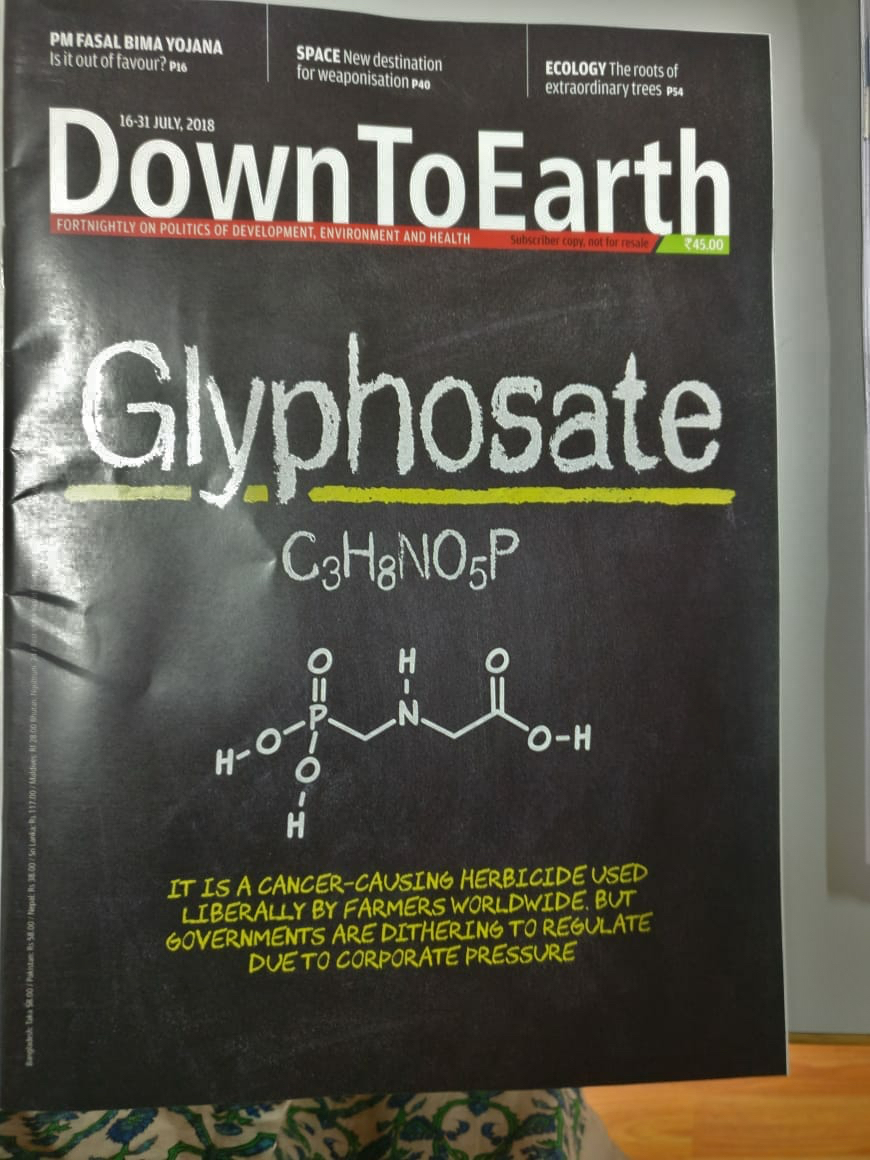A lot of updates are due, that perhaps deserve to be recorded, all to do with glyphosate.
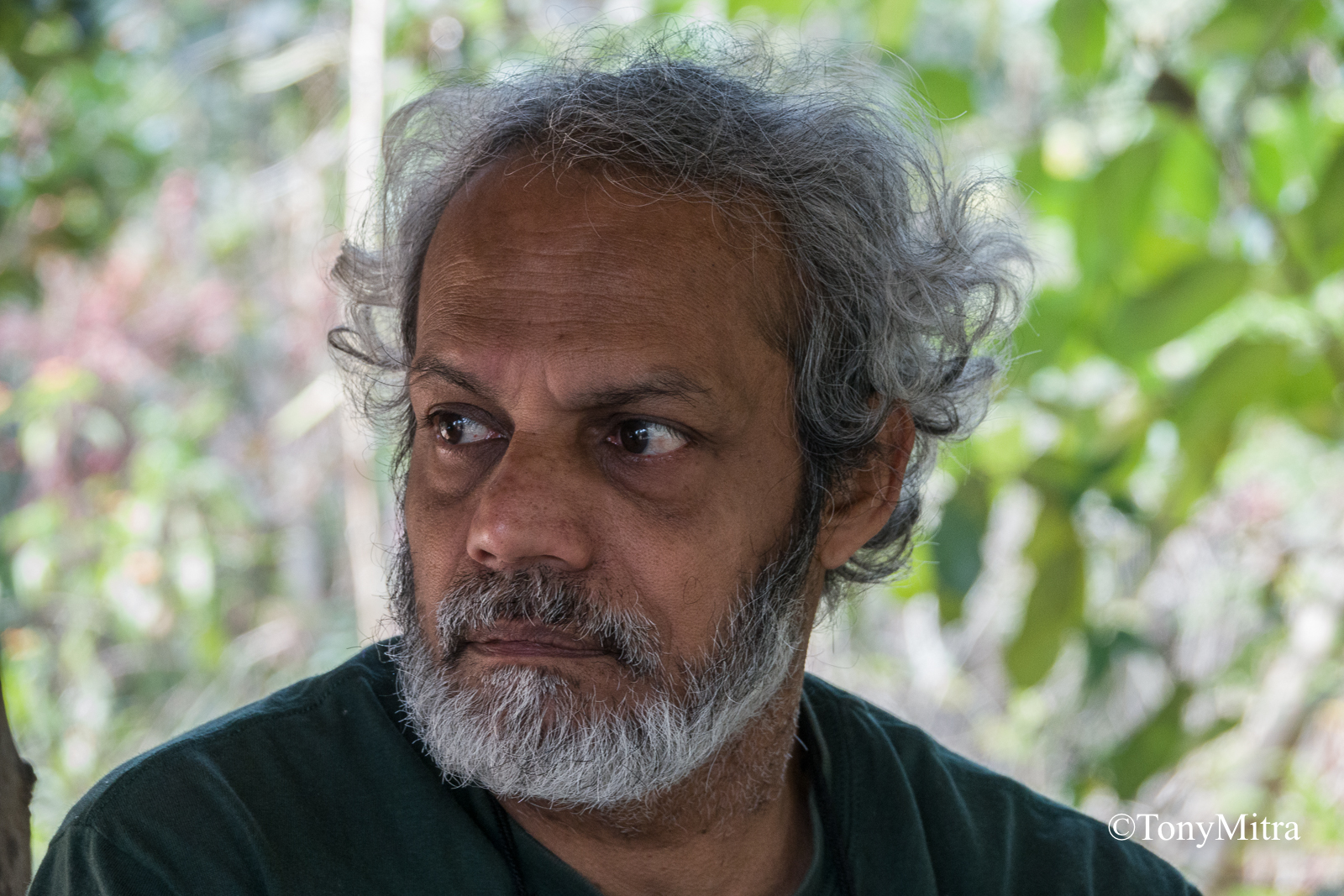
Debal Deb at his Odisha farm
Most of it started thanks to Debal Deb inviting me to spend a week with him in iin his rice conservation farm in Odisha. I accepted the invitation and saw quite a few things, and not just his efforts in conserving some thousand five hundred kinds of folk rice. I saw the variety of crops that were grown to sustain soil health. I saw the wonderful home garden with papaya and other trees bearing unbelievable numbers of ripe fruits and the flock of wild birds that frequented the area. I saw how the nearby villagers were influenced. I also saw the near zero carbon footprint housing erected with sun baked bricks. And, I got to yap with Debal.
This followed up with me yapping and arguing with Debal and Martin Brown in the evenings, where I perhaps ended up describing some of the dangers involved in glyphosate getting itself mis-incorporated into humans and other proteins by mimicking glycine, one of the canonical amino acids and part of the 20 basic building blocks of life.
It was Debal that first convinced me to speak about glyphosate, covering what I had learned from Scientists like Anthony Samsel on one end, and what I ended up doing in Canada on the other. And that first talk has turned into a keystone event in India. It started a chain reaction that is even now triggering more events here and there, in urban as well as rural enclaves.
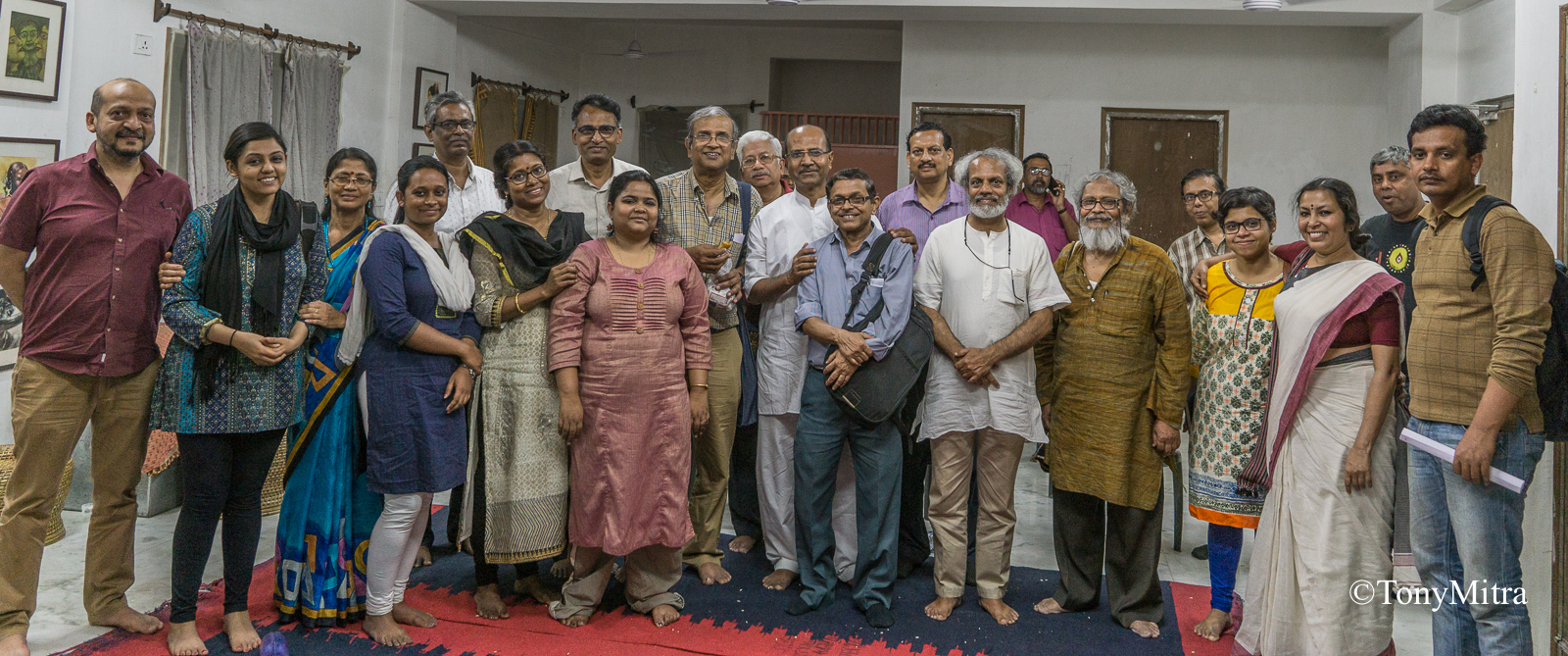
The group at my first talk arranged by Debal Deb at Kalipur on the 24th of February, 2018.
Although Bengal media is refusing to cover the glyphosate story till now, it has one way or another broken into mainstream media in India. First salvo was fired by reputed Delhi journalist Bharat Dogra on two papers covering Hindi and English. The first came out in Deshbandhu, followed by an English article on The Statesman.
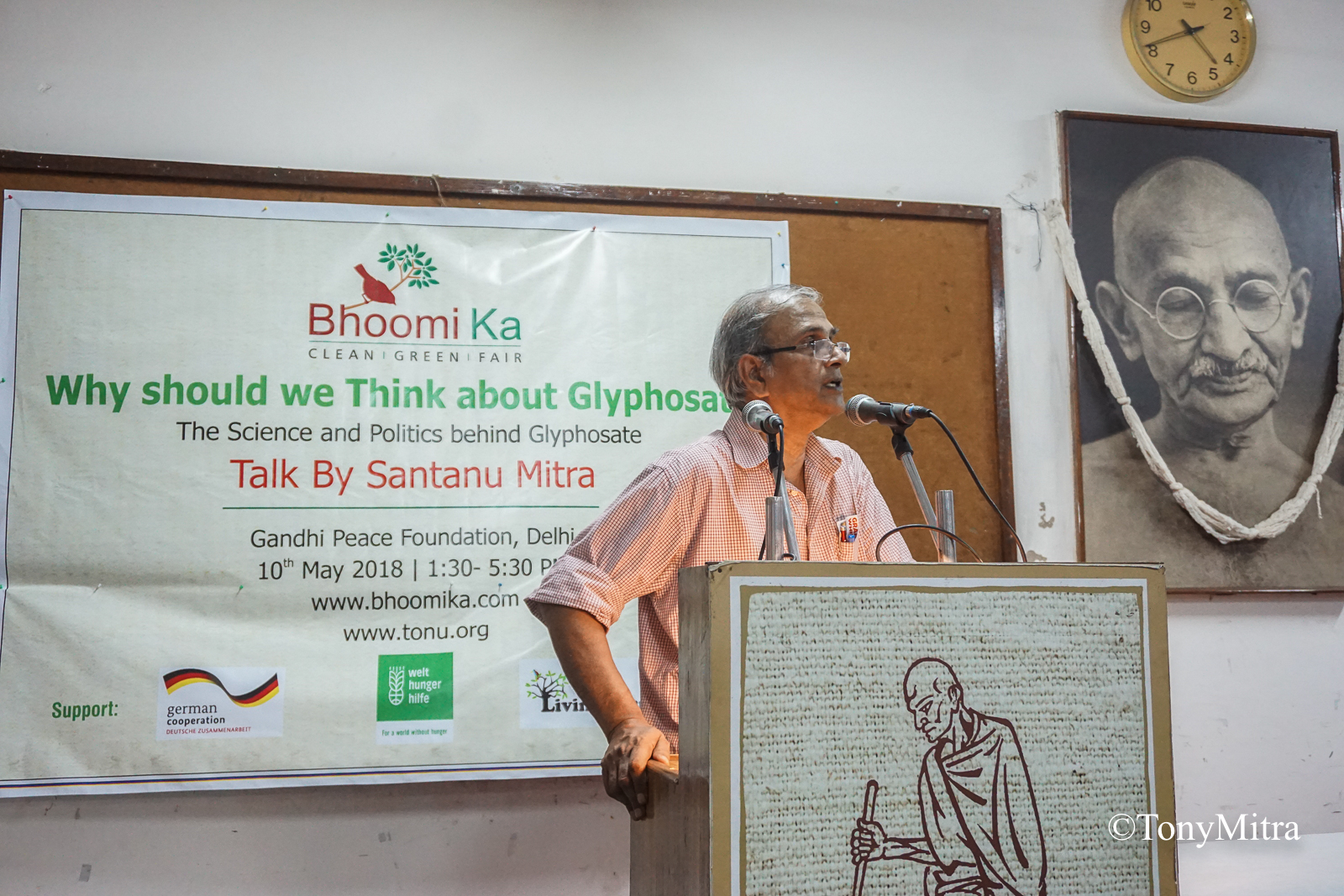
My talk at the Gandhi Peace Foundation, arranged by Angshuman & Bhoomi Ka
But before that happened, Angshuman Das of Bhoomi Ka, Kolkata heard me talk at Debal’s study circle and invited me to speak again at their venue in Kolkata. And then he followed up with a trip to Delhi for me to make a presentation at the Gandhi Peace Foundation in the month of may, organised by Bhumi Ka Delhi. That opened a lot more doors, including a number of articles in mainstream media.
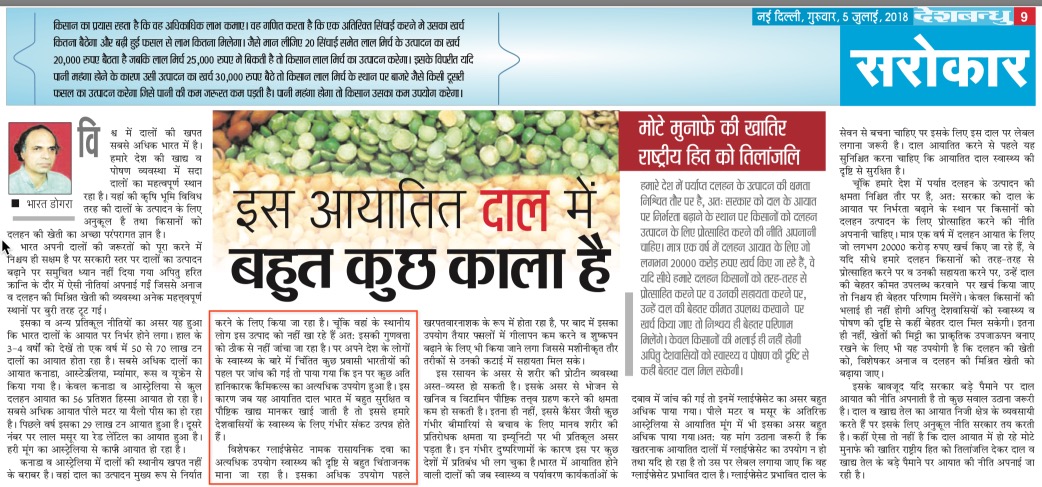
Hindi article by Bharat Dogra on Deshbandhu
The Statesman article, titled “Health hazards of imported pulses” is here.
Then came the cover page news on the bimonthly eco-magazine “Down to Earth” by Vibha Varshney, who had attended my presentation at Gandhi Peace Foundation in Delhi in the month of May. But she followed it up with further research on her part, especially do with the issue that imported lentils from Canada might be very toxic. She tried to get comments from relevant Government departments, where the people refused to comment. I guess the Government got to know, one way or another, that the cat has been belled.
Then there were more talks in Kolkata, influenced by Samar Bagchi, such as one at the Ashutosh Mukherji science foundation. The partial group picture below shows some of the attendants.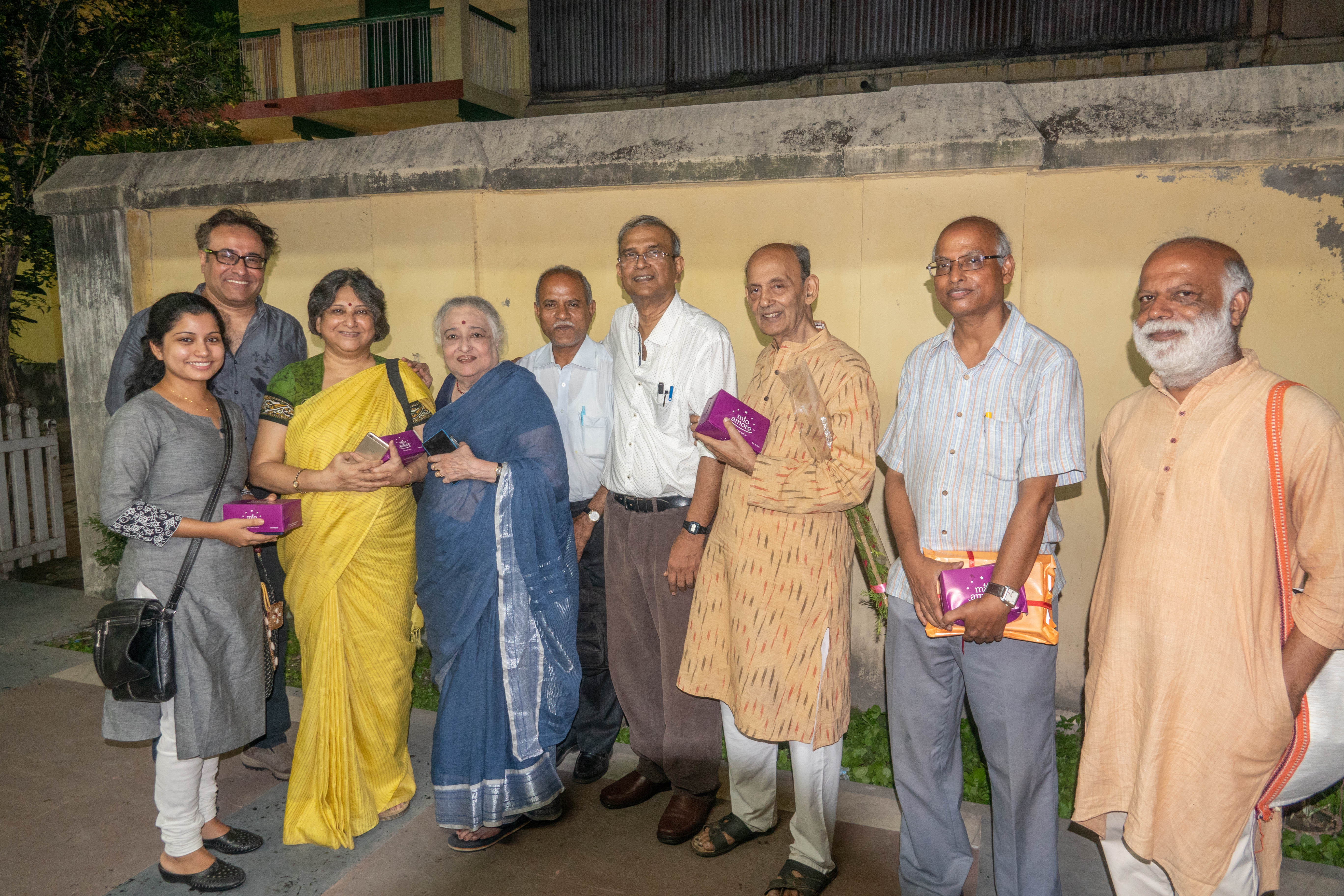
Then came my twin talk at Bhoomi College and Ragi Cana at Bangaluru as invited by Vishala Padmanabhan and assisted by Bhoomi College & Ananya Mehta.
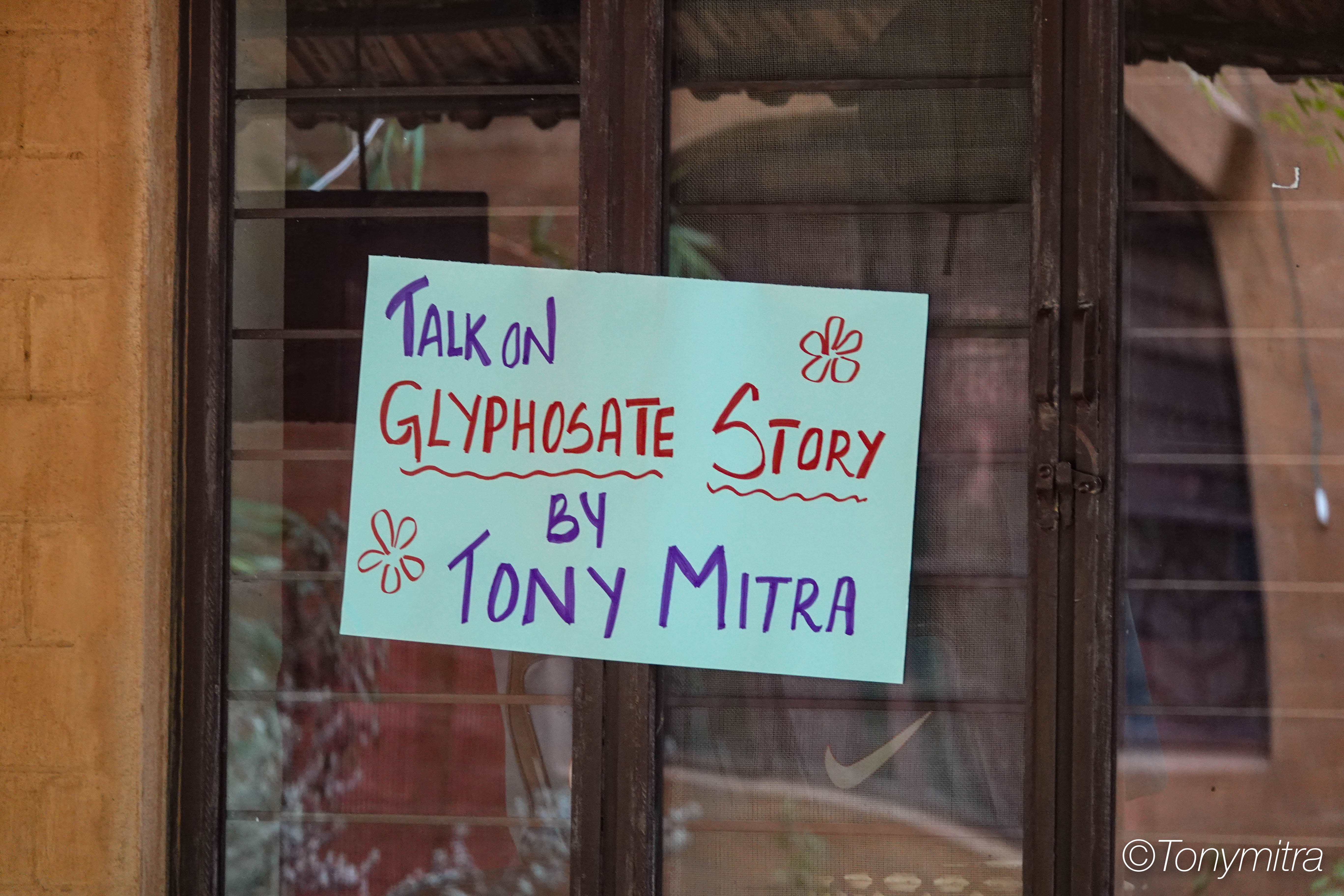
The Bangaluru visit was, in more ways than one, a watershed event for me.
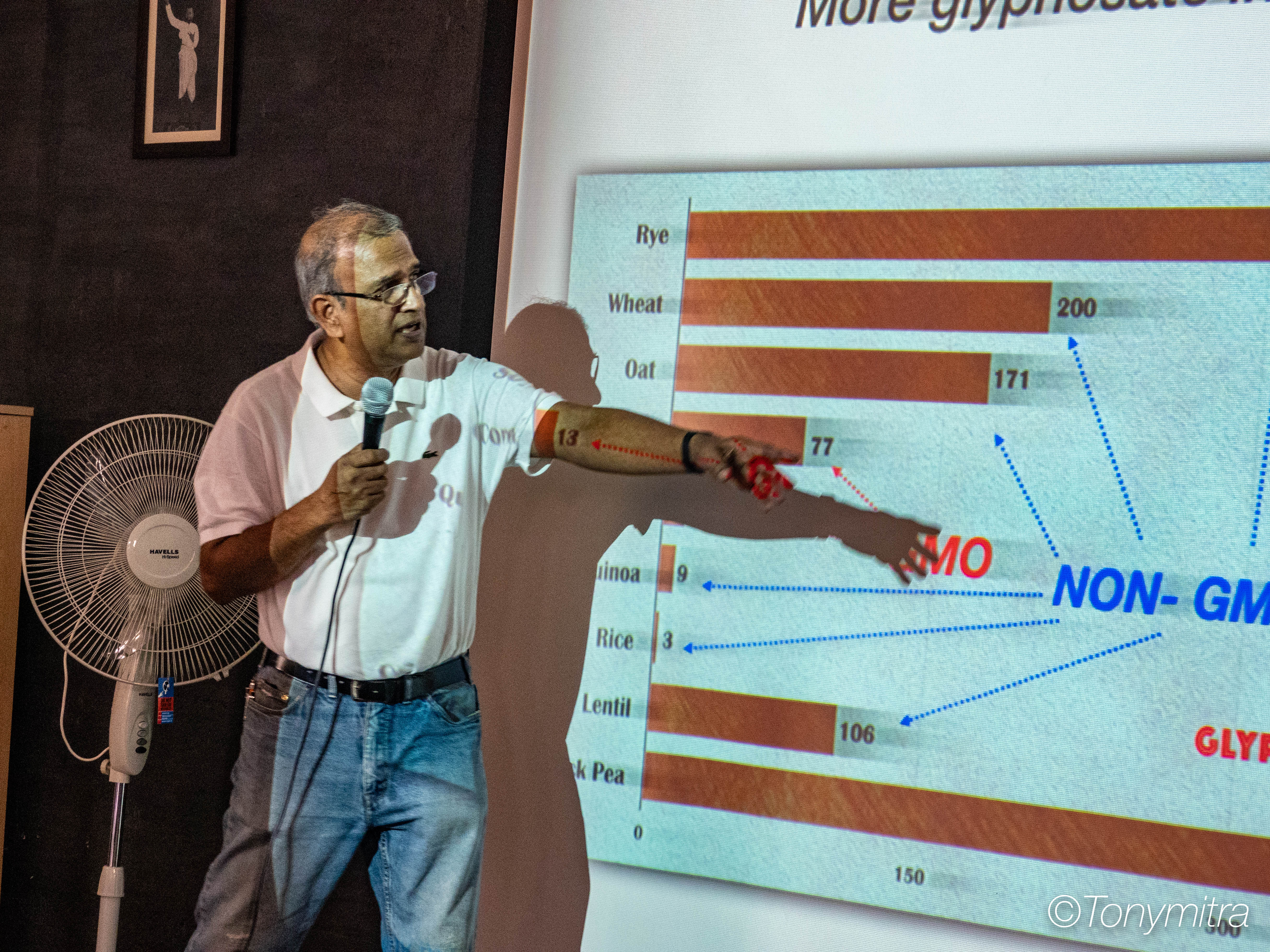
This was also the first time when I had a class of youngsters in the front rows of the audience.
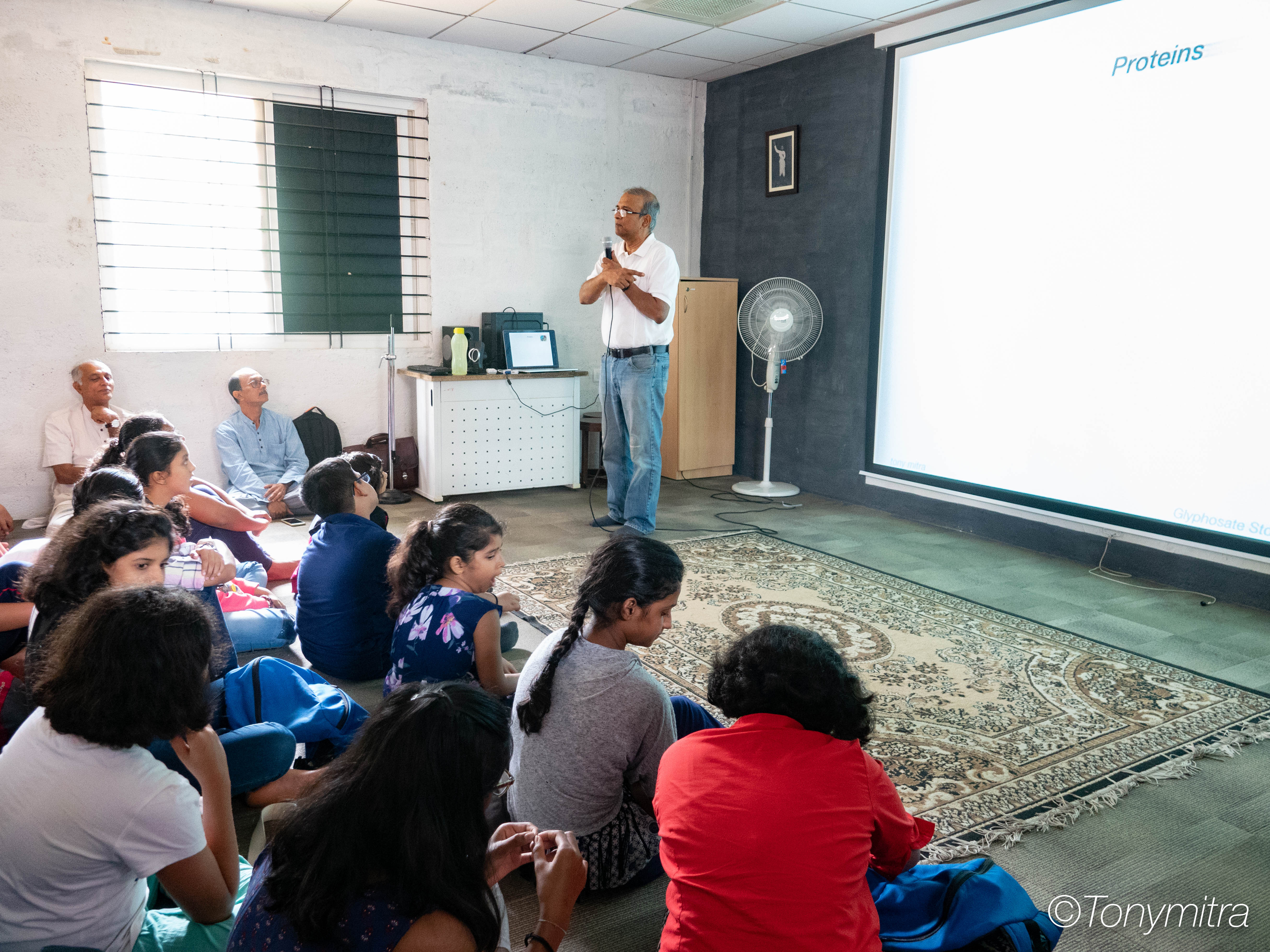
I learned, directly and indirectly, of many of the issues involving conserving biodiversity, interactions with the government on legislations that involve or affect organic farmers, on petty ego and undercurrents of human emotions getting in the way of finding a common ground and reaching resolutions.
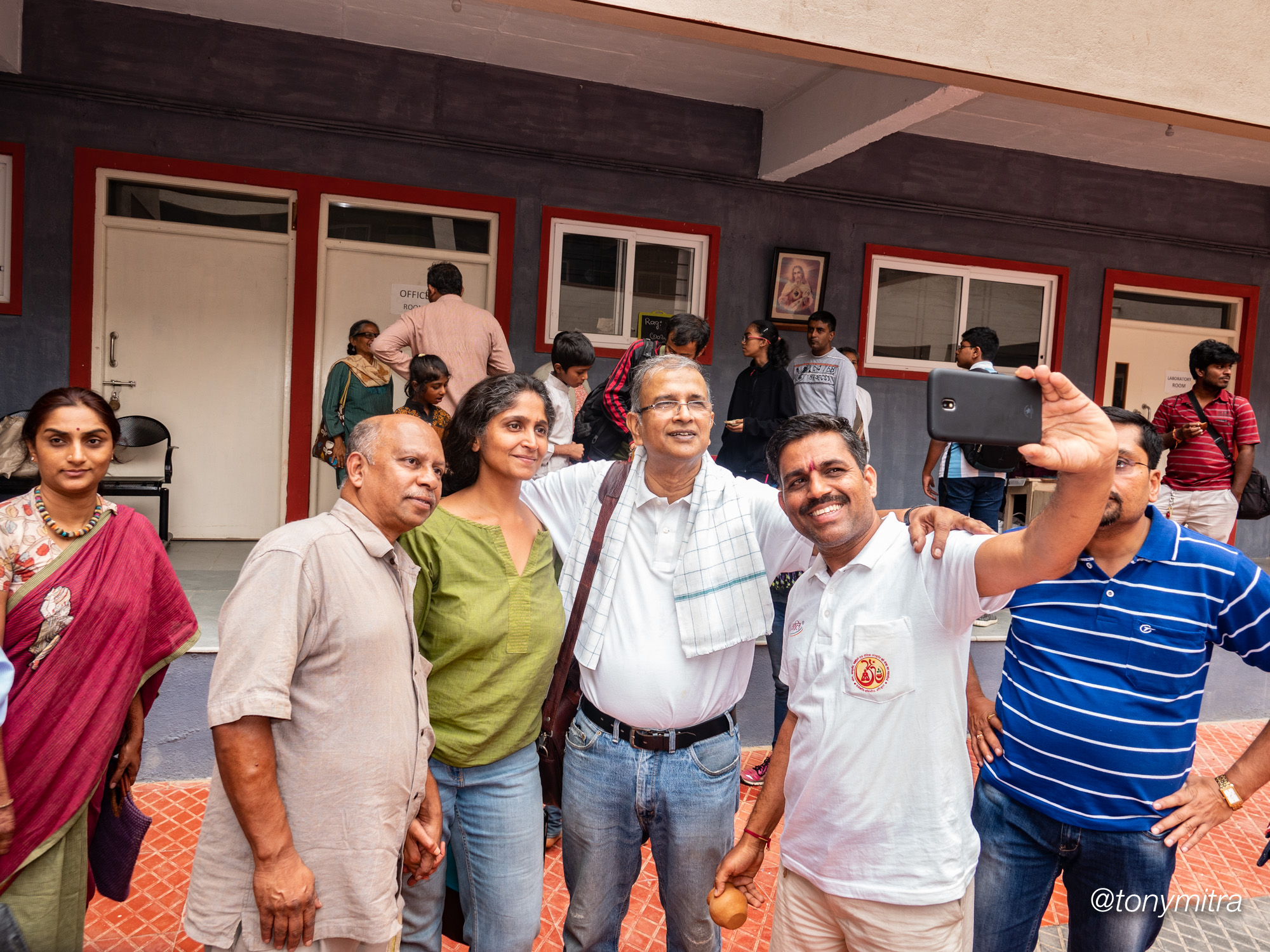
I found in Vishala a fresh face of emerging Indian eco-consciousness, that I found both impressive and very endearing. I found in her friend Ananya an equally committed worker bee. Then there was Seetha, the founder of Bhoomi College that invited me to stay in her compound for two days and arranged for eating unique organic vegetarian diets at their excellent facility.
This followed up by two wonderful articles on two issues of Deccan Chronicle by journalist S.N.V. Sudhir.
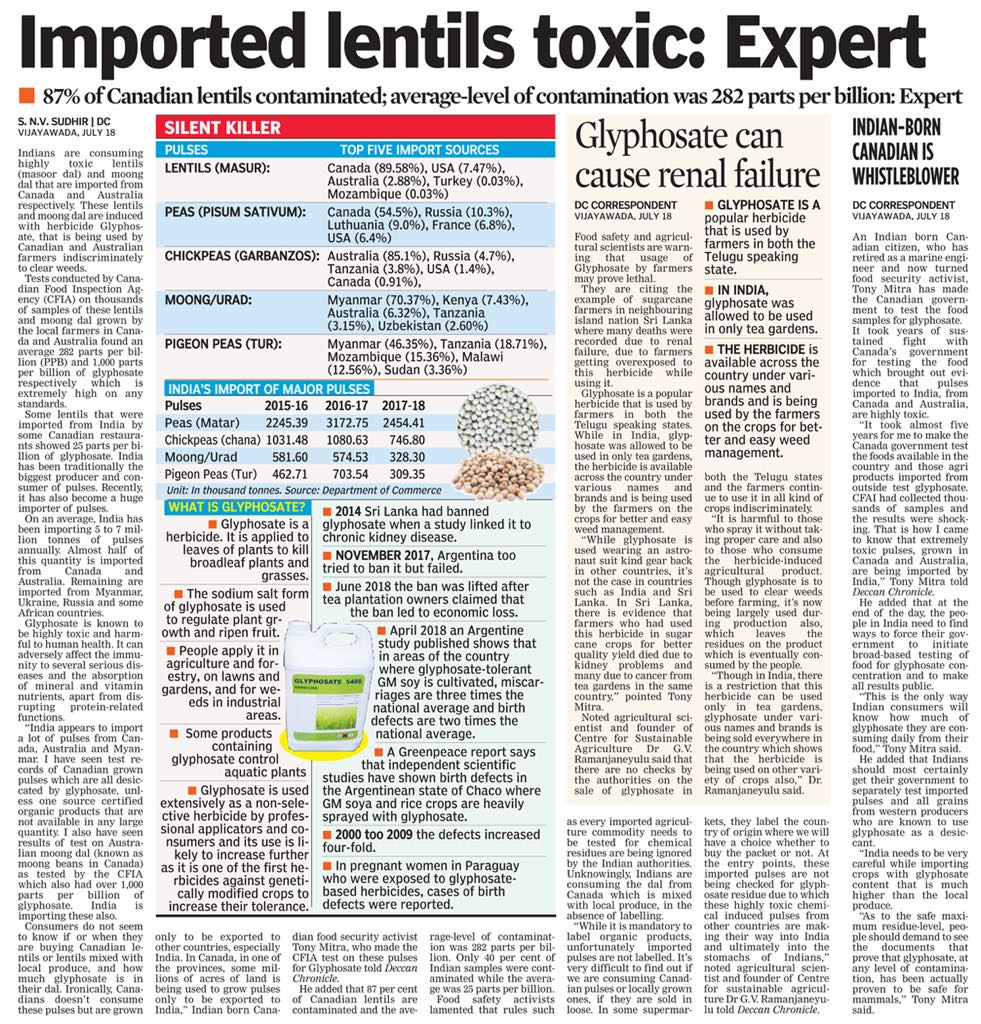 One was for the Telengana issue while the other was for Andhra Pradesh.
One was for the Telengana issue while the other was for Andhra Pradesh.
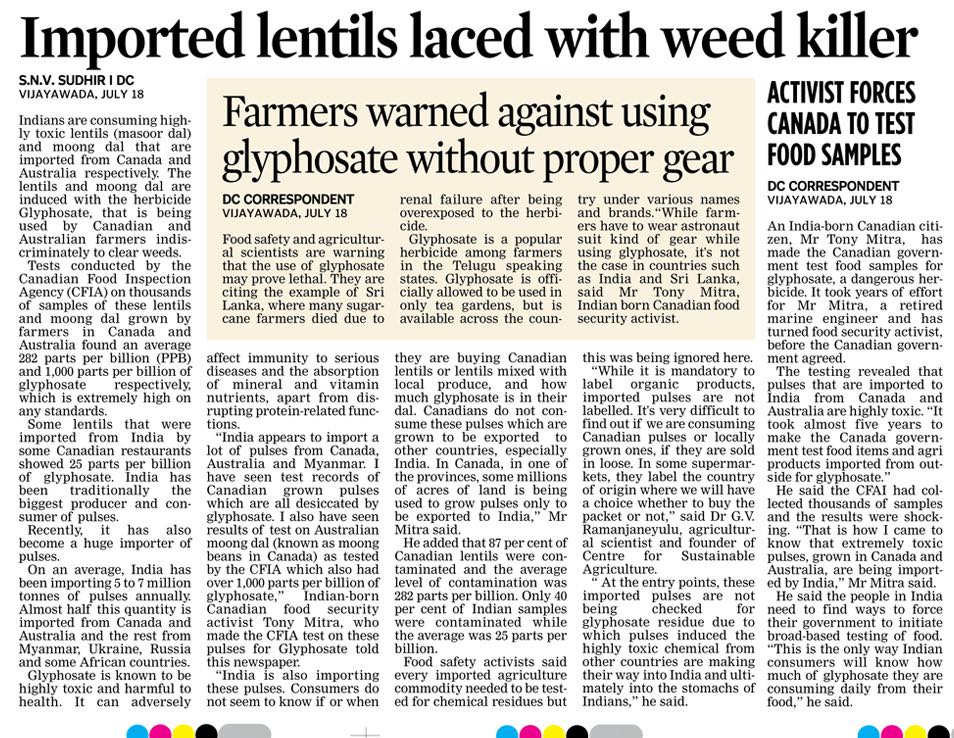
I was asked by Sabuj Mancha (সবুজ মঞ্চ) and Disha (দিশা) to deliver a talk on glyphosate on the 25th of July at 5 PM at 186A Kalikapur Road, Kolkata.
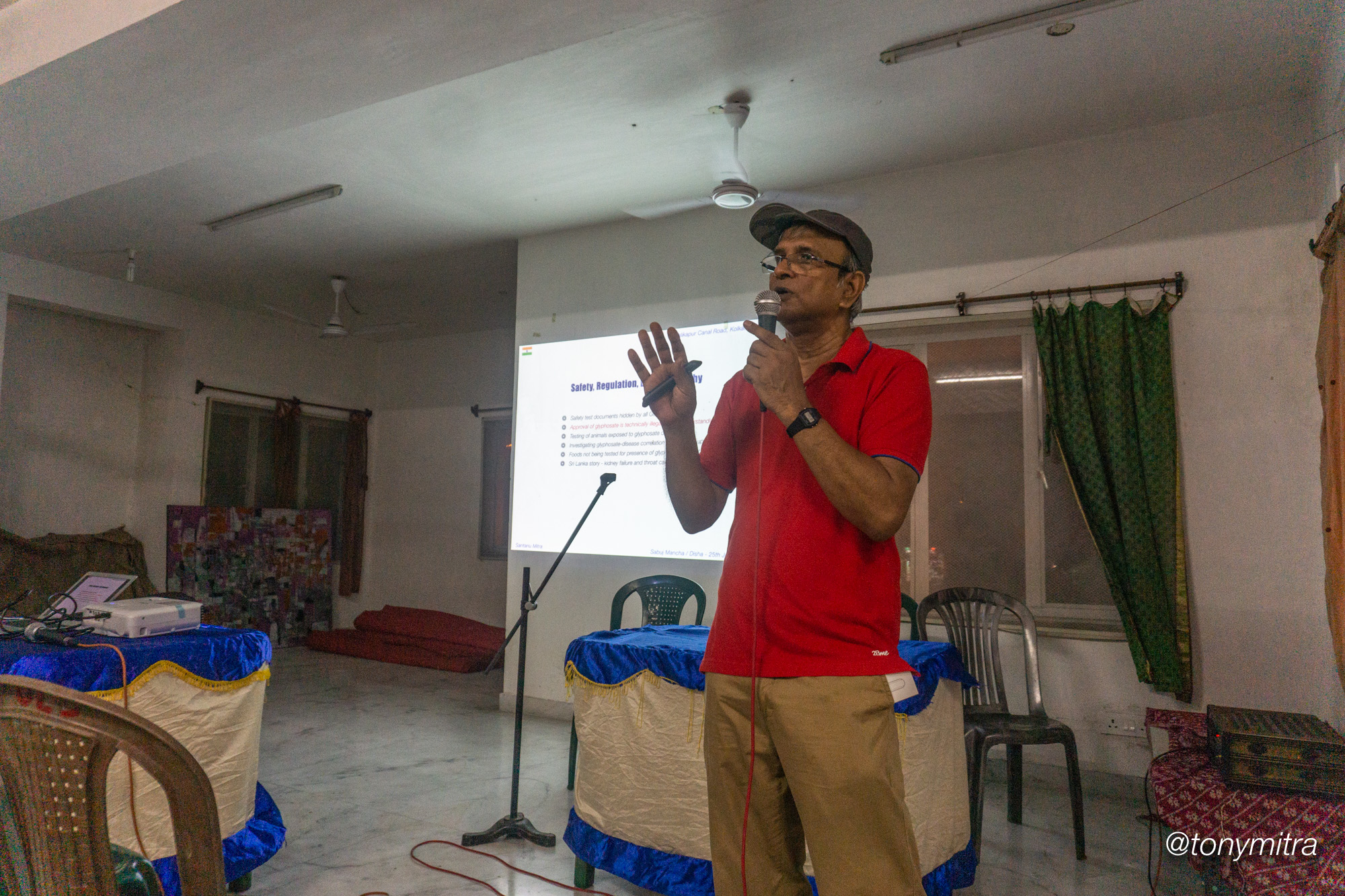
July 25 – Kalikapur Kolkata
This is the same place where I had earlier delivered my first talk in India on glyphosate, as requested by Debal Deb back in February 2018.
I put up the pdf file of that presentation on the web. It is not password protected. Some of the slides had action items where multiple images get on top of each other. Single pdf image of those slides can get confusing. However, the news articles are listed in this blog post, for all to see.
Around this time, I was also getting a lot of additional information relating to glyphosate, from my scientist friends back in the US and Canada. One such helpful person was wildlife scientist Judy Hoy of Montana. She actually sent me the photograph that showed visibly noticeable birth defect in the jaws of an endangered species in India – the wild cattle called “gaur”. The picture was of a calf sitting on the ground next to a metal pan, and is presumed to be under care of humans, possibly an orphan, that had likely suffered a birth defect while still a foetus in its mothers womb, through glyphosate exposure.
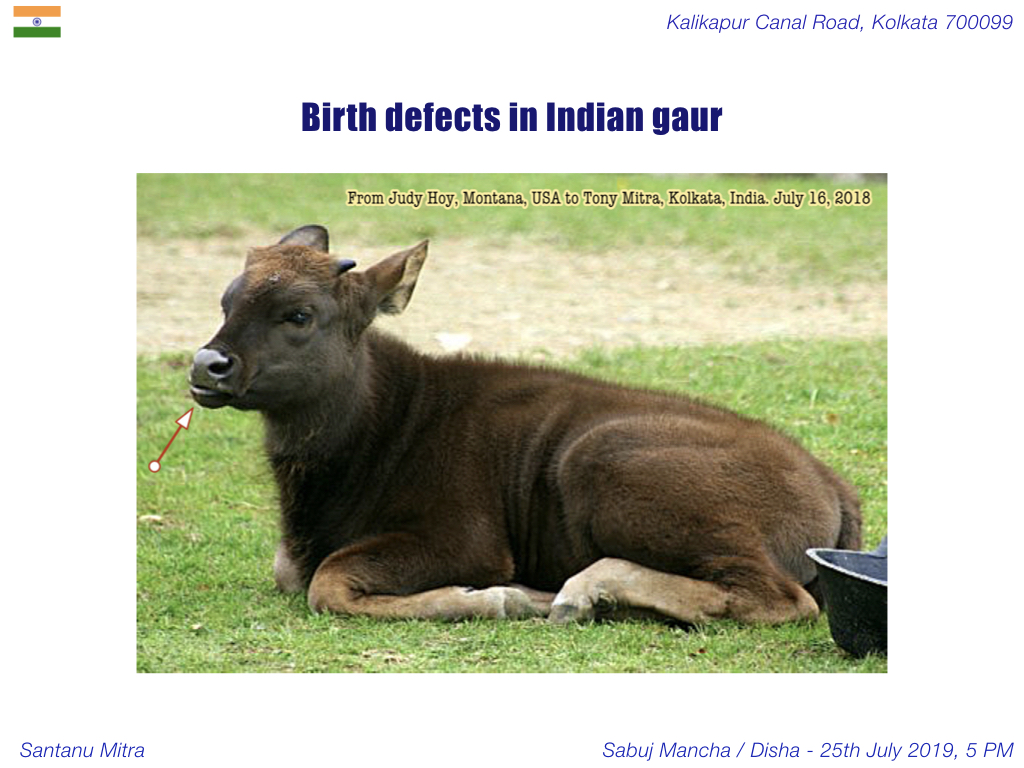
This blog might appear to the reader as indication that the level of awareness on the dangers of glyphosate has been raised just a little bit since Debal first identified the need for speaking on this issue and its relevance.
Interestingly, the big honcho’s of India’s anti-GMO groups and their alliances are, not unlike in the west, mostly pre-occupied with themselves and their bubble of anti-GMO echo chamber, and give all the impression of themselves being genetically engineered to ignore all dangers of glyphosate, which is saturating the landscape, while keeping their vision fixed and fixated on GMO only, like deer caught in the headlights, or a rabbit caught in the gaze of a hypnotic snake. I am told that some of the megalomaniacs that form the core group of these associations have asked “what is the relevance (of glyphosate) for India?”.
Its like someone spending twenty years studying seven volumes of Ramayana and then asking if Sita might be Lord Rama’s father-in-law.
This however, is not typical an Indian evolution. It took me some years back in North America, to fully. understand this phenomenon. The first group of people that were self-occupied and fixated with GMO and refused to acknowledge the need to resist glyphosate, were the very anti-GMO and clean food activists I used to hang out with. They were the fist line of defence of the biotech industry. They were the flip side of the same coin. The whole shebang, from agro-chemical corporations, their shareholders, politicians as well as all these anti-GMO groups and talking heads, were all on the same side of the issue, all ensuring conservation and propagation of toxic food industry, but each carefully creating their own image and avatar and pretending to represent this or that group.
I have since been told that this is the very definition of “controlled opposition”.

However, my extended trip to India has also opened my eyes on encouraging issues and signs that I was not aware of before and would never have known if Debal did not ask me to speak up on glyphosate at Kalikapur, and if that did not somehow spread the news under the radar and out of sight, far into the rural heartland where the real India resides.
It has opened new doors and I have been fortunate to glimpse at remarkable groups of people that are, individually and in small groups, already come to the concluding that chemical free farming of heirloom crops, and staying as far away from glyphosate as possible, is not only the way to go, but was the main alternative to an ecocide that was already busy writing the epitaph for the living planet.
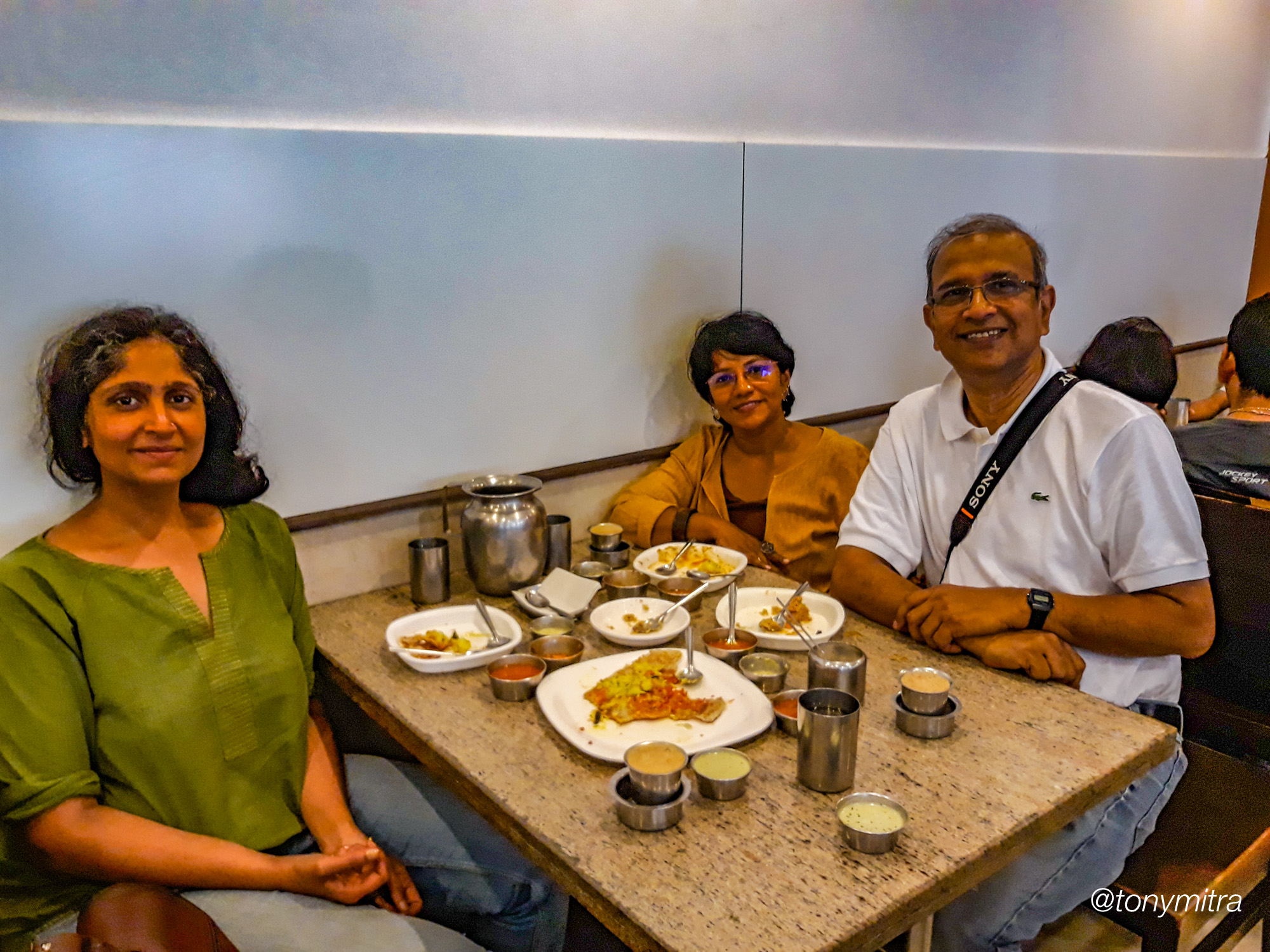
Having Udupi & dosa with Vishala and Ananya at Bangaluru on a Sunday morning.
In many ways, Vishala and Ananya of Bangaluru represent part of this grassroots movement that bypasses the mainstream everything, and represent a new face of India that I find hopeful.
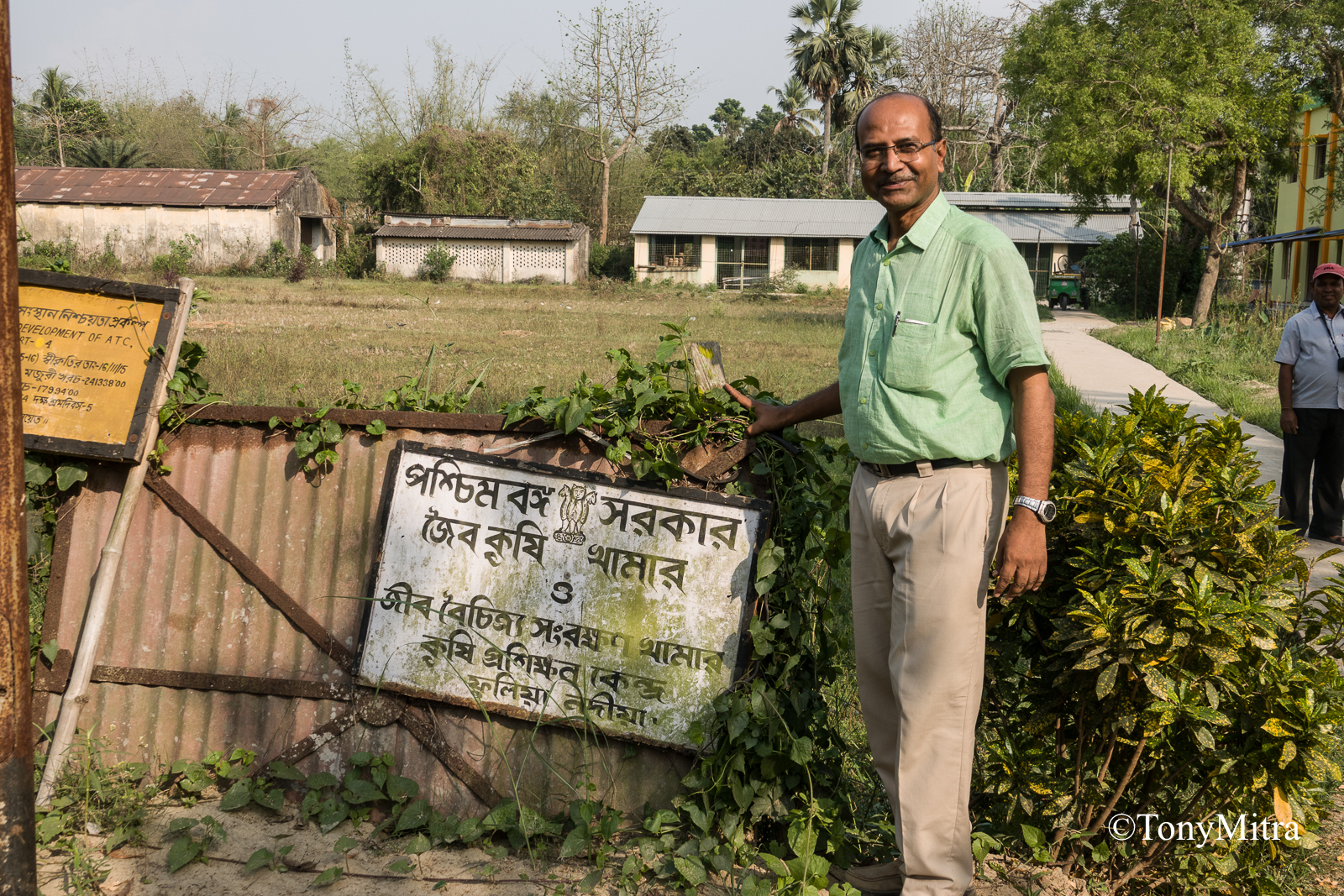
Anupam Paul at his Agriculture Training Centre in Fulia, Dist of Nadia
There is also the story of Anshuman Das, Anupam Paul, Tathagata Das, Rabin Bannerjee, Devpriya Mukherjee, Sujit Mitra, Shamik Bannerjee, Abhra Chakraborti and many others that are all coming to parallel and similar conclusions about the future of food, environment and humanity, and are taking steps, within their individual means, to address this issue from multiple angles. I have been enriched by contact with them, and wish to highlight their own trials and efforts to push back at this massive global endeavour to destroy what needs to be preserved, by human development, or what Debal might like to call – Developmentality.
Then there are entrepreneurs like Pravin Singhania and Abhishek Singhania (not related). they represent another angle – both having reached similar conclusion independently, to be directly involved in organic farming, one in order to feed clean food for his family, while continuing in his main profession which is not related to agriculture, while the other made a lifestyle change to make organic agriculture his profession. There are many others like them, that are buying or leasing farmlands and beginning to get involved in producing food. Its the beginning of a new level of realisation – that moving away from the soil, and expecting good food to automatically appear in stores, and leaving the issue in the hands of the Government, agro-corporations, or even the NGO talking heads, may have been an unmitigated disaster, for the world, and for India.
Then there are topics under discussion involving North American scientists Anthony Samsel, Stephanie Seneff, Don Huber, Judy Hoy, André Comeau, Theirry Vrain and myself (myself being the only non-scientist in the group), through mostly email. They cover a plethora of issues that are worth mentioning, all to do with glyphosate.
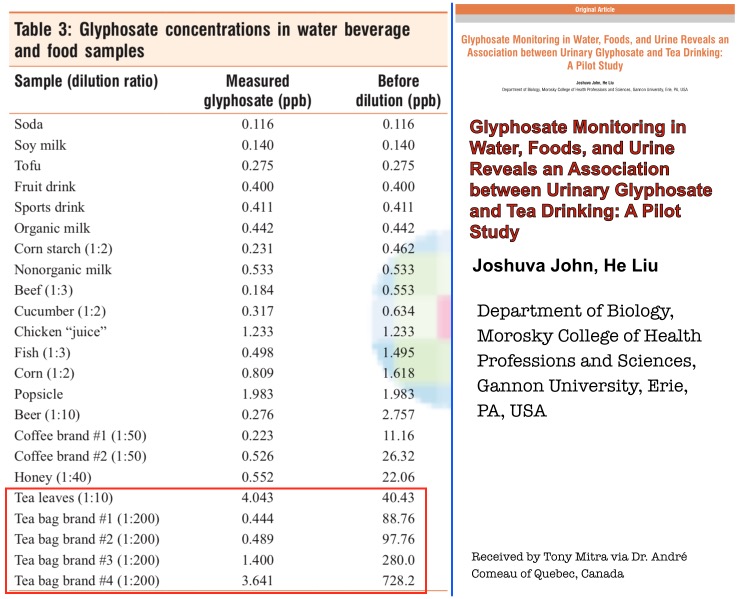 Here is a piece of information I have not harped upon too much while in India, but I should. The problem is too much to talk about and too little time. Anyhow, the thing is, India and most of Asia have heavy tea drinkers. India is also a major tea producer and exporter, much like Sri Lanka next door.
Here is a piece of information I have not harped upon too much while in India, but I should. The problem is too much to talk about and too little time. Anyhow, the thing is, India and most of Asia have heavy tea drinkers. India is also a major tea producer and exporter, much like Sri Lanka next door.
In Sri Lanka, there is also some indication that tea garden workers that use glyphosate to clear weeds around tea plants have apparently been suffering from throat cancer at a rate substantially higher than the national average, and glyphosate is suspected to be the root cause. The nation had implemented an island wide ban on import or use of glyphosate. But lately they have been pressurised to relax the ban and allow selective use, including in tea gardens. One of the pressure points, I heard, came from Japan, a major importer of Sri Lanka tea. Apparently Japan did not like the fact that Sri Lanka was trying to find alternatives to glyphosate for tea gardens. According to the Japanese, these alternatives are not proven safe, but, according to the Japanese, Glyphosate is deemed safe. As a result Japan threatened to cut off all import of Lankan tea , which would result in heavy loss to earning and jobs for Sri Lanka.
It is perhaps equally interesting that one fo the major producers of glyphosate in India has been recently bought over reportedly by a Japanese firm. And India is one supply source of glyphosate for Sri Lanka. I wonder if conflict of interest and share holder earnings for Japanese investors is clouding the whole issue of public safety in tea.
Meanwhile, an American firm has tested a lot of tea brands and found much glyphosate in most brands. Another group found prevalence of glyphosate in urine of tea drinkers.
What is happening in India – does anybody know ? I am aware that glyphosate has been used in tea gardens in the North East of India from the 1980s. These are issues that need to be highlighted, and I should do it, somehow within the time frame. I would like Indians to start checking the following:
- How much glyphosate is in various brands of tea in India.
- If there is noticeable health hazards among tea garden workers that use glyphosate
- If there is noticeable health hazards among tea drinkers in India from glyphosate contamination
- Testing effect of glyphosate in beverage on laboratory test animals
And last but not least, I have had my share of interaction with elected politicians in provincial ministry here in West Bengal, and perhaps more are in line.I have been trying to convince them to not allow glyphosate to be used indiscriminately, and blindly, without any proof of its safety. I have been asking them to demand that the safety documents on glyphosate be released by Delhi, failing which to ban the molecule. I have been asking them to consider initiating independent safety test on glyphosate and same time engage in broad based testing of local foods for presence of glyphosate. All these are critical issues. They too deserve a mention.
Those will go into part II of this write up.

